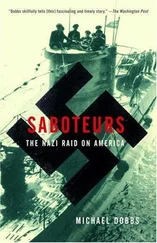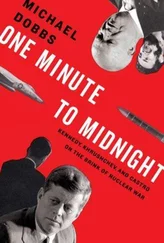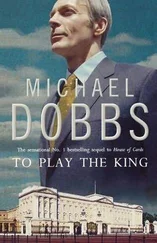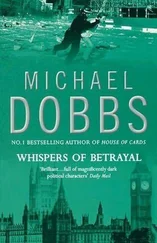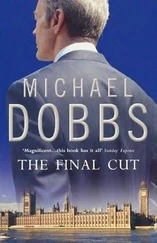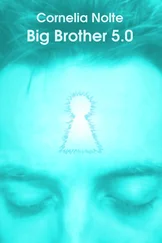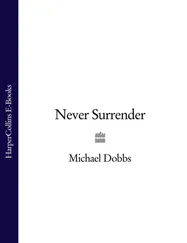At a time when Communist leaders all over Eastern Europe were being chased out of office, Milošević was climbing to new heights of power by exploiting nationalist grievances. Nationalism stood him in good stead in March 1991, when his regime faced its most serious crisis. Tens of thousands of opposition demonstrators took to the streets of Belgrade to protest against the official manipulation of the mass media. As they attempted to take over the television station, dubbed the Bastille by Milošević’s opponents, one of the protesters was killed by a police bullet. There were hundreds of arrests. The government declared a state of emergency and attempted to crush the uprising with tanks. The huge show of force further inflamed the demonstrators, who set up a street “parliament” in the center of Belgrade that attracted hundreds of thousands of people.
The police brutality severely dented Milošević’s halo. The leader who had risen to power on the populist slogan “Nobody has the right to beat you” was “beating” his own people. In order to defuse the protests, he was obliged to make a tactical retreat, dismissing some of the most obnoxious members of his entourage, including the television chief. He then served notice that Serbia was preparing for war. Nationalism became a way of diverting attention from the economic and political crisis threatening the country.
Milošević outlined his strategy for carving a Greater Serbia out of the disintegrating Yugoslav federation at a secret briefing for regional party chiefs on March 16. He told them they had a sacred duty to defend the three million Serbs who lived outside Serbia proper, mainly in Croatia and Bosnia-Herzegovina. If the rights and freedoms of Serbs in other Yugoslav republics were threatened, the country’s internal borders would have to be redrawn, if necessary by force. This was no time for pro-democracy demonstrations or whining about the unprecedented decline in living standards. Serbia was surrounded by enemies, and national unity was essential. The course of future events would be decided by the strong, not the weak.
“We consider that it is the legitimate right and interest of the Serb people to live in a single state. This is the beginning and end of our policy,” he announced, to thunderous applause. “If we must fight, then, by God, we will fight. I only hope no one will be so crazy as to fight against us. We may not know how to work well or to do business well, but at least we know how to fight well.” 59
MILOŠEVIĆ WAS RIGHT to criticize the political paralysis that had gripped Yugoslavia in the years since Tito’s death. The country was drifting from one crisis to another. Bold action was needed to resolve the economic mess left behind by decades of Communist rule, but this proved impossible under the rules of consensus laid down by Tito. By the mid-1980s Yugoslavia had become virtually ungovernable. The federal government was extremely weak, and unable to impose its authority on the country. It seemed impossible for the republics to reach agreement on an austerity package to slash the budget deficit and allow loss-making factories to go bankrupt.
At first many American diplomats in Belgrade were favorably impressed by Milošević. They hoped the Serbian leader would use his newfound authority to break the political logjam and push through the necessary democratic reforms. It gradually became clear that Milošević had no intention of destroying the monopoly system that provided him with his own power base. Instead of supporting the federal government’s hesitant attempts to introduce market reforms, he worked behind the scenes to sabotage them. Instead of damping down nationalism, he used his control over the media to stoke the flames.
The nationalist explosion in Serbia soon led to a counternationalism in Croatia, Yugoslavia’s second largest republic. In April 1990 Croats went to the polls and elected a leader who was almost a mirror image of Milošević. Like his Serb counterpart, Franjo Tuđman was a former Communist. He had fought with Tito’s partisans during the Second World War and gone on to become one of the youngest generals in the Yugoslav People’s Army. His conversion to nationalism had come earlier than that of Milošević—he was one of the leading figures in an outpouring of Croatian national sentiment in the early 1970s known as the Euphoria—but his political philosophy was remarkably similar. Like Milošević, he was suspicious of genuine political pluralism. He regarded himself as the symbol of Croatia’s centuries-old desire for independent statehood and believed that the whole nation should rally around him.
The two leaders were alike even in their denunciations of each other. Zagreb television became a bizarre parody of Belgrade television. Tuđman was always the lead story on Croatian television news, just as Milošević’s sayings and doings dominated Serbian newscasts. The hate-filled language used by the two television stations was practically interchangeable; only the targets were different. Zagreb attacked the “terrorist, hegemonistic” policies of Serbia, while Belgrade attacked the “terrorist, hegemonistic” policies of Croatia. Both sides used long-forgotten World War II epithets against the other. Croatian commentators referred to Serbian leaders as “chetniks,” the name used by Serbian royalists who fought against Tito’s partisans. Serbian commentators referred to Croatian leaders as “ustashi,” after the brutal Croatian fascists who established a pro-Nazi puppet regime in Zagreb during the war.
There was, however, one important difference between the leaders of Serbia and Croatia. For Milošević, nationalism was a means to an end, preserving his own power. For Tuđman, restoring Croatian independence was the supreme goal. Whereas Milošević was cold and calculating, Tuđman was emotional and narrow-minded. He had much less political experience than his Serbian rival and made numerous errors of judgment. One of the most serious was his insensitivity to the traumas of the 600,000-strong Serb minority in Croatia.
During the war hundreds of thousands of Serbs had been massacred by the ustashi. Tuđman did little to allay Serb concerns about the place they would occupy in an independent Croatian state. The Croatian parliament adopted national symbols that were offensive to many Serbs, including the red and white checkerboard that had been used by the ustashi regime. (Tuđman argued that it was a perfectly respectable Croatian emblem that long predated the ustashi.) After winning the 1990 elections, his Croatian Democratic Union (HDZ) began a systematic purge of Serbs from the police force, the education system, and even industry. Croats argued that such a step was only fair, since the Serbs had been overrepresented in Croatia under the Communists. While it was certainly true that the Serb minority in Croatia had enjoyed special privileges in the past—this was part of Tito’s delicate ethnic balancing act—mass dismissals were a provocative act under the circumstances. Tuđman played into the hands of the Serbian propagandists.
Given the hard-line attitudes on each side and the ghastly memories of the older generation of Serbs, conflict was almost inevitable. The two nationalisms fed on each other, but they also competed. There was little room for compromise, particularly in the border regions of Croatia, where many Serbs lived. The first signs of trouble came in August 1990, in Krajina, a stony plateau just inland from the Dalmatian coast, where Serbs had been living since the sixteenth century. The Krajina Serbs declared their “autonomy” from the rest of Croatia and appealed to the Serb-dominated Yugoslav army for assistance. That army provided the population with weapons and political support, preventing the Tuđman government from establishing its authority in the region.
Читать дальше

